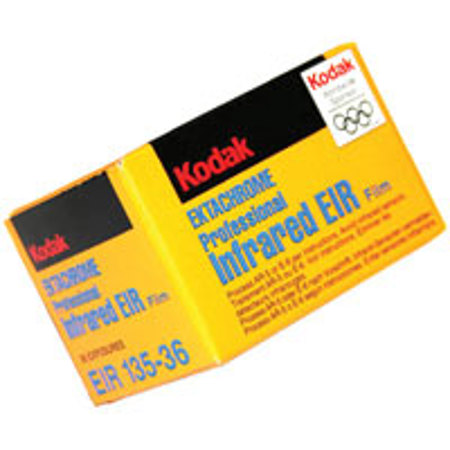
Overview
Compare
Protection
Reviews about this item
Review Summary
2009-04-14T21:00:00
Rated 5 out of 5
this is the most interesting film i know and i have dedicated much time to it
this is the most interesting film i know and i have dedicated much time to it.the film has been discontinued from kodak, but i am cutting it down to 120 medium format for anyone interested[@]
infraredhead
2007-05-08T21:00:00
Rated 5 out of 5
It is its own beautiful universe.
We're still learing about color infrared photography... but what an exciting world to explore. There's definitely a learning curve with CIR, but you'll be getting fascinating results from the get-go. A fantastic book on the subject is The Art of Color Infrared Photography by Steven H. Begleiter. One important subject the book covers is the use of filters needed for CIR. The standard filter used is the Wratten yellow #12.
todd
2007-02-11T19:00:00
Rated 5 out of 5
Great film -- Difficult to Develop
Excellent film -- difficult to develop correctly.[...] costs way too much.
The W.
2007-02-04T19:00:00
Rated 5 out of 5
Infrared, my film of choice for 2 years
I do fine art abstracts and for the last two years I've been using the Kodak Infrared Slide Film. Most of the time I cross process and make enlargements in the darkroom. Turning the slide film into color negatives with super saturated colors is perfect for my application. The images have a unique grain texture where colors overlap. I have never seen this in any other film. As an artist this gives my work a quality that separates me from other artists.
Abstract D.
About Kodak Ektachrome Professional Infrared EIR Color Slide Film ISO 100/200, 35mm Size, 36 Exposure, Transparency - USA
FEATURED REVIEWS
this is the most interesting film i know and i have dedicated much time to it
By infraredhead
this is the most interesting film i know and i have dedicated much time to it.the film has been discontinued from kodak, but i am cutting it down to 120 medium format for anyone interested[@]
It is its own beautiful universe.
By todd
We're still learing about color infrared photography... but what an exciting world to explore. There's definitely a learning curve with CIR, but you'll be getting fascinating results from the get-go. A fantastic book on the subject is The Art of Color Infrared Photography by Steven H. Begleiter. One important subject the book covers is the use of filters needed for CIR. The standard filter used is the Wratten yellow #12.
KODAK EKTACHROME Professional Infrared EIR Film is Kodak's first infrared-sensitive color transparency film compatible with Process E-6 chemicals. It provides scientists and technologists with the option of processing their film locally or remaining with specialty labs. It also permits advanced amateur and commercial photographers to experiment more readily with a "false-color" film for special effects.
Due to its infrared sensitivity, exposure to any infrared sources will fog this film. Labs must take special care to handle EIR film properly. To avoid fogging this film:
° Open the film can only in total darkness.
° Turn off all infrared sources, e.g., sensors, cameras, goggles, etc., in the darkroom and processing area.
EKTACHROME Professional Infrared EIR Film can be processed in either Process AR-5 or Process E-6 chemicals, depending on the results required:
° For infrared accuracy, use KODAK EA-5 Chemicals and Process AR-5. An exposure index of 100 is a good starting point for daylight exposures with a KODAK WRATTEN Gelatin Filter No. 12.
° Process E-6 produces images with higher color saturation and contrast. The effective speed of film processed in Process E-6 chemicals is EI 200. EIR film can be pushed one stop for an exposure index of approximately 320. We do not recommend pushing the film beyond one stop. Note: Be sure to turn off all sources of infrared radiation that may be associated with your processing equipment (sensors, goggles, cameras, etc) to avoid fogging this film.
Due to its thin 4-mil KODAK ESTAR Base, film used in critical applications may require special handling to avoid the possibility of crinkling during the cutting operation. Labs with minimal experience in handling EIR film may want to consider hand-mounting the processed slides.